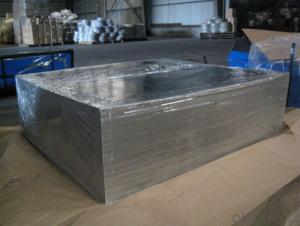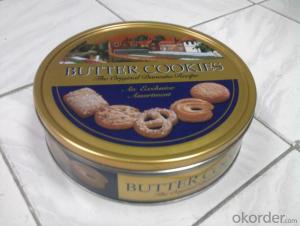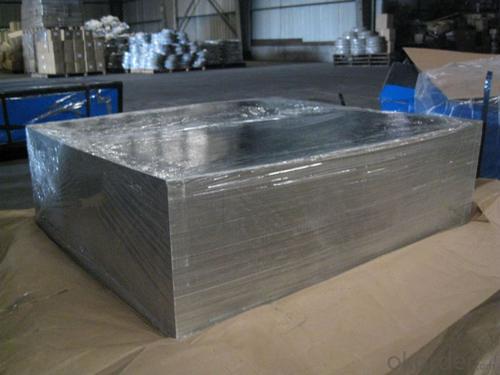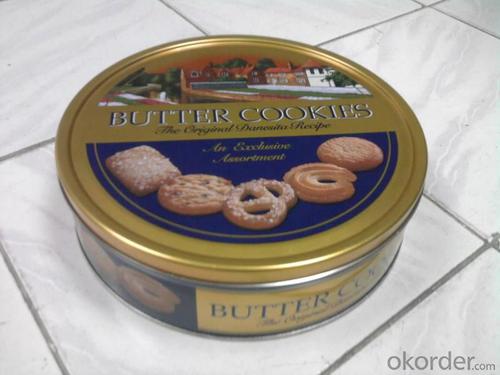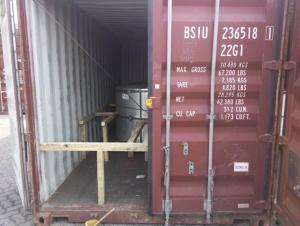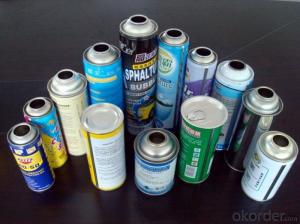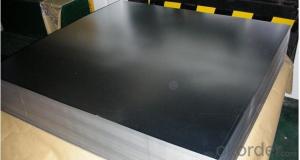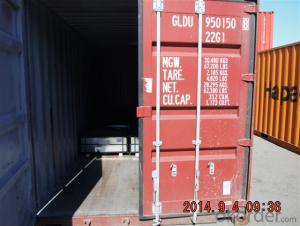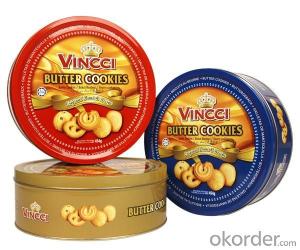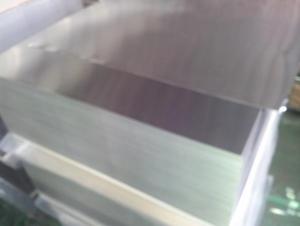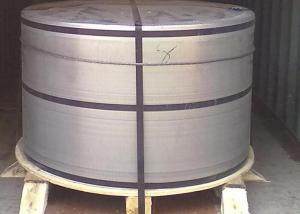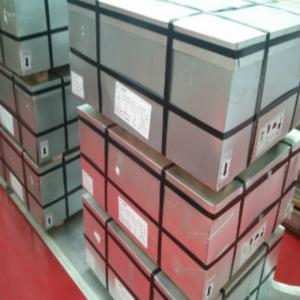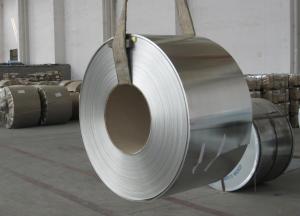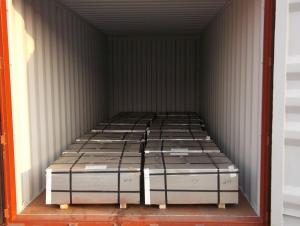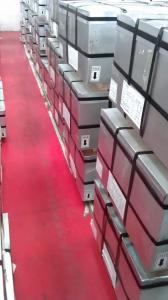Prime GradeTinplate For Aerosol Cans, MR/SPCC
- Loading Port:
- China main port
- Payment Terms:
- TT OR LC
- Min Order Qty:
- 25 m.t
- Supply Capability:
- 40000 m.t/month
OKorder Service Pledge
OKorder Financial Service
You Might Also Like
Specification
1.Brief Introduction
Tinplate is widely used for making all types of containers, containing industrial usage such as paint can, oil can, aerosol cans etc., and food cans like milk powder cans, tomato paste can, dry food cans etc.
2. Our CA Line Production Range
Temper | Thickness(mm) | Width(mm) | Length(mm) |
T3CA | 0.19~0.20 | 800~900 | 520~1068 |
0.21~0.25 | 800~950 | ||
0.26~0.45 | 800~1050 | ||
T4CA | 0.17~0.20 | 800~950 | |
0.20~0.45 | 800~1050 | ||
T5CA | 0.17~0.20 | 800~950 | |
0.20~0.28 | 800~1050 |
3. Our production steps
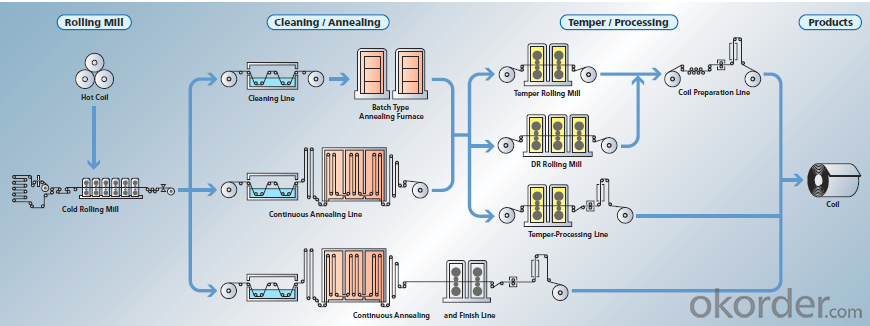
4. Usage Scope
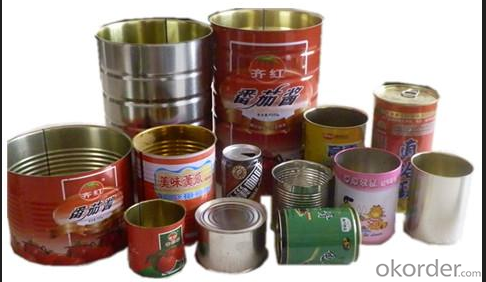
5. Our euxport market
our tinplate has been popularly exported to more than 30 countries, including Asia, Europe countries, Gulf area, Sounth America, Northe & South Afric etc.
- Q: What are the main factors influencing the demand for tinplate?
- The main factors influencing the demand for tinplate include the growth of the packaging industry, consumer preferences for canned food and beverages, economic conditions, and government regulations on food safety and packaging standards.
- Q: How does tinplate affect the overall barrier properties of packaging?
- Tinplate enhances the barrier properties of packaging by providing a protective layer that prevents oxygen, moisture, and other external factors from permeating the package. This improves the shelf life and quality of the product, ensuring its freshness and integrity for a longer period.
- Q: What is the use of tinplate printing tin, storage of food safety
- Tinplate was first imported into China from abroad. It is a kind of iron with better quality and is made of extremely thin iron sheet
- Q: How does tinplate compare to other packaging materials in terms of brand recognition?
- Tinplate stands out among other packaging materials in terms of brand recognition due to its unique and timeless appeal. Its classic metallic appearance and durability evoke a sense of quality and nostalgia, making it highly recognizable and associated with premium brands. Additionally, tinplate allows for intricate and vibrant designs, ensuring that brands can effectively showcase their logos and visuals, further enhancing brand recognition.
- Q: Can tinplate be used for automotive parts?
- Yes, tinplate can be used for automotive parts. It is a durable material that provides good corrosion resistance, making it suitable for various automotive applications such as body panels, fuel tanks, and exhaust systems.
- Q: Can tinplate be embossed?
- Yes, tinplate can be embossed.
- Q: What are the common challenges in recycling tinplate packaging?
- Some common challenges in recycling tinplate packaging include contamination from other materials, such as paper or plastic, which can make the recycling process more difficult and less efficient. Additionally, tinplate packaging often contains a plastic lining or coating, which must be removed before recycling the tinplate itself. Another challenge is that tinplate packaging is often small and lightweight, making it more prone to being lost or mixed in with other waste streams. Finally, there may be limited infrastructure or collection systems in place to effectively collect and recycle tinplate packaging.
- Q: Can tinplate be used for industrial or automotive applications?
- Yes, tinplate can be used for industrial or automotive applications. Tinplate is a type of steel coated with a thin layer of tin, which provides excellent corrosion resistance and durability. This makes it suitable for various industrial and automotive purposes, such as manufacturing cans, containers, packaging, electrical components, and automotive parts. Its versatility and protective properties make tinplate a preferred choice in these industries.
- Q: Can tinplate be used for packaging of non-food products?
- Yes, tinplate can be used for packaging of non-food products. Tinplate is a versatile material that offers excellent protection against moisture, light, and oxygen, making it suitable for various non-food items such as cosmetics, chemicals, and pharmaceuticals. Its durability and recyclability further make it a popular choice for packaging non-food products.
- Q: How does tinplate perform in terms of light blocking properties?
- Tinplate offers excellent light blocking properties due to its opaque and reflective surface, resulting in minimal light transmission.
Send your message to us
Prime GradeTinplate For Aerosol Cans, MR/SPCC
- Loading Port:
- China main port
- Payment Terms:
- TT OR LC
- Min Order Qty:
- 25 m.t
- Supply Capability:
- 40000 m.t/month
OKorder Service Pledge
OKorder Financial Service
Similar products
Hot products
Hot Searches
Related keywords
